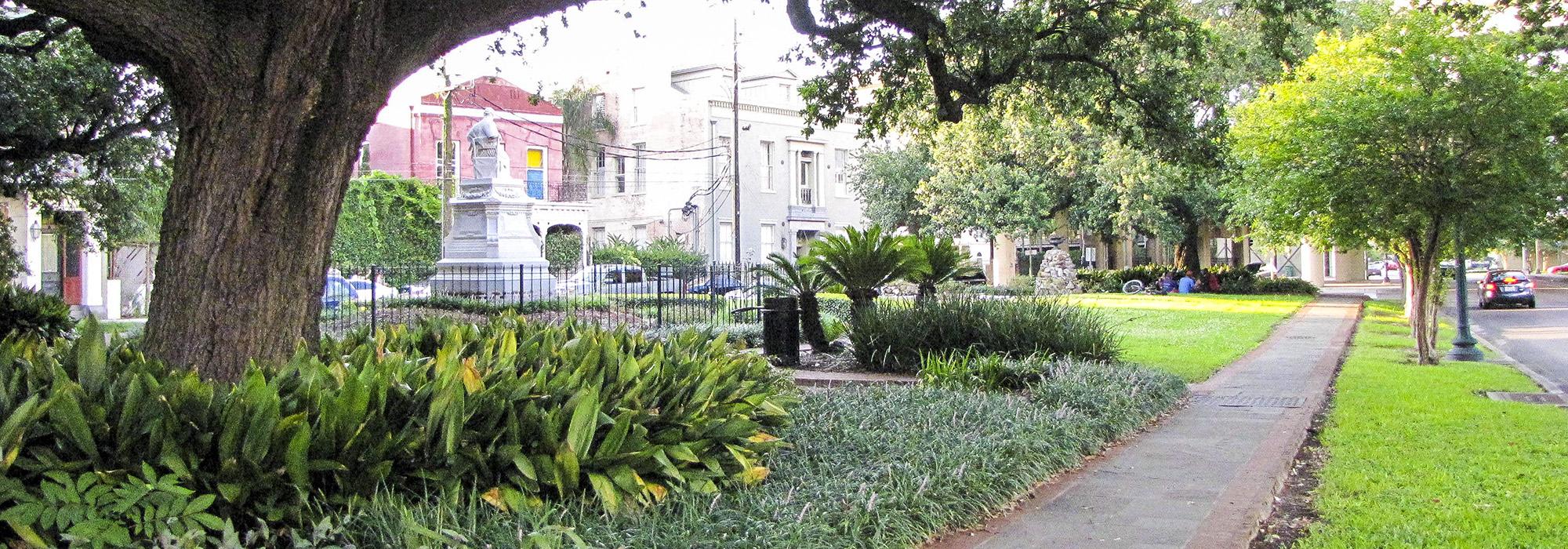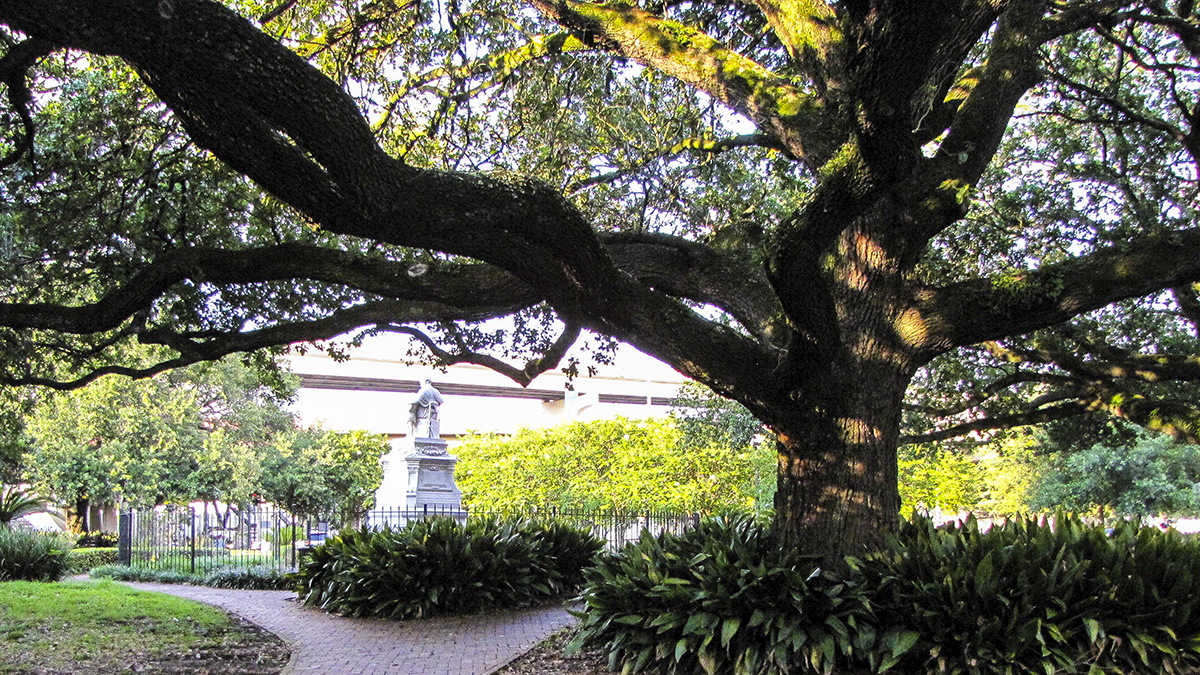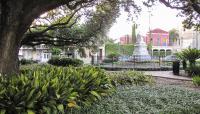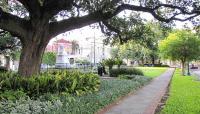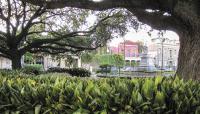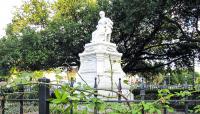Landscape Information
Occupying a 0.36-acre triangular parcel near the Pontchartrain Expressway in the Lower Garden District, this small park is a monument to Margaret Haughery, who dedicated her life to supporting the city’s orphans. The public called for a memorial immediately following Haughery’s death in 1882, and the site selected was previously a pasture adjacent to the Louise Home, one of the orphanages that Haughery supported. The original park design featured two long, diagonal walkways that converged at the northern tip, a double allée of Canary Island palms lining Camp and Prytania Streets. The site remained relatively unchanged until 1956, when the Crescent City Connection, a bridge spanning the Mississippi River, was constructed with an elevated entrance ramp on Camp Street, cutting off Margaret Place Park from public view. The decision was made in 1994 to take down the ramp and restore the area to the 1806 plan for the Lower Garden District designed by Creole architect and surveyor Barthélémy Lafon. In this Greek Revival plan, the triangle occupied by Margaret Place was one piece of a finger-park system with interlocking, linear green spaces leading to the centrally located Coliseum Square.
The park is bordered by Margaret Place, Camp Street, and Clio Street. The wide, arching branches of mature live oaks shade a broad bed of aspidistra and ferns on the both ends of the park. New York sculptor Alexander Doyle crafted the statue of Margaret Haughery consoling a child, which stands at the center of the park, erected in 1884, making it the second oldest statue of a woman erected in America. The statue is located on the southern end and is surrounded by rows of fountain grass and enclosed by a cast-iron fence. A brick path lined with clipped hedges, fountain grass, and sago palms encircles the Haughery statue and radiates out toward each corner of the park. Two rock mounds flank the walkway near its northern terminus, and an allée of crepe myrtles screens traffic from Camp Street.



